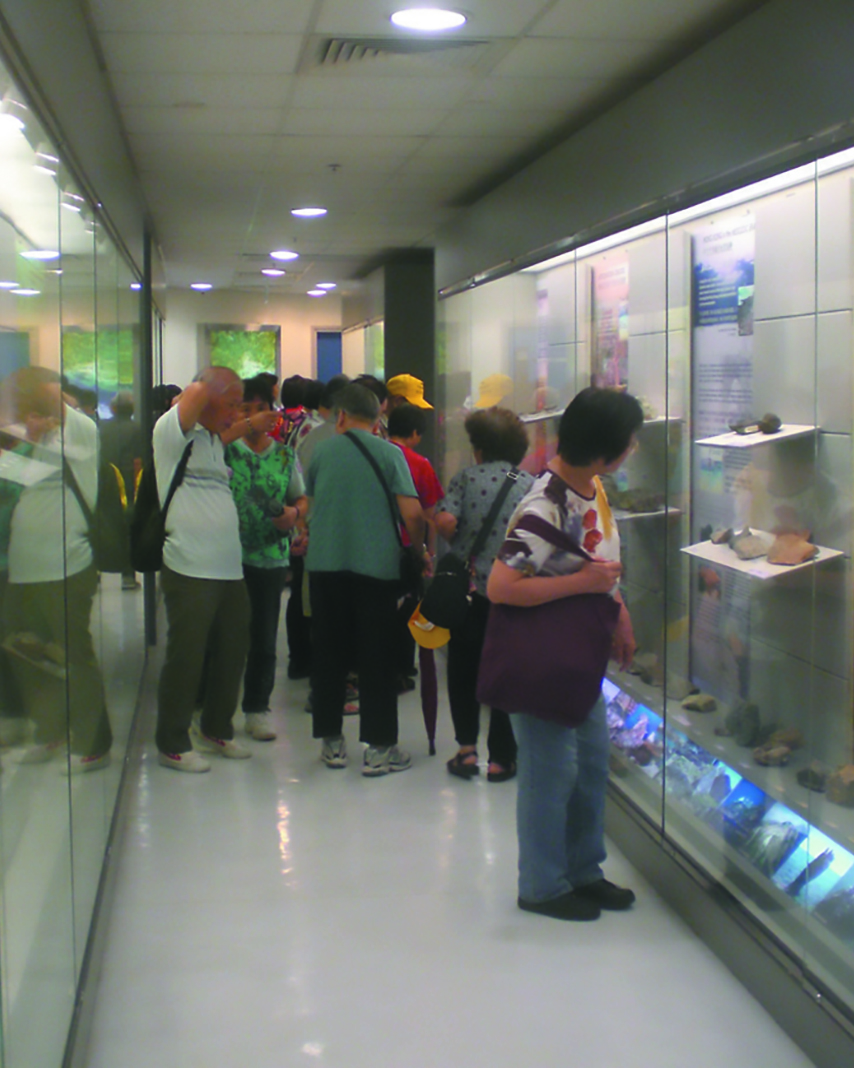
In this section you will find materials that support the implementation of EarthComm, Chapter 2: Chapter Challenge.
Reference
Minerals
Minerals, NESTA Windows to the Universe
Describes how minerals are divided into different groups based on their chemistry. Explanations provided in English and Spanish.
Mineral Forming Environments, American Museum of Natural History
Examine images of minerals from exhibits of eight different environments where minerals form. Explains which minerals form in specific environments.
Do We Take Minerals for Granted?, USGS
Overview of the products manufactured from mineral resources.
The Formation of Igneous, Sedimentary and Metamorphic Rocks
Igneous Rocks, Oregon State University
View a slide show about igneous rocks. This is part of a series of lessons called "Rocks and Minerals."
Igneous Rocks by Setting, USGS
Describes the two major settings relative to the surface of igneous rocks
Sedimentary Rocks and Sedimentary Rock Classification, Ocean Drilling Program
Describes the major types of sedimentary rocks and the different settings in which they form.
Characteristics of Sedimentary Rocks, Dr. Michael Pidwirny, University of British Columbia Okanagan
The properties of sedimentary rocks are introduced in this illustrated section from an online textbook (Fundamentals of Physical Geography, Michael Pidwirny, University of British Columbia Okanagan, Canada). Key terms are linked to definitions in an accompanying glossary.
Metamorphic Rocks, USGS
Explains the processes which form metamorphic rocks, as well as the difference between foliated and non-foliated metamorphic rocks.
Deformation and Foliation, USGS
Description and diagram showing the development of foilation and an example of a foliated rock from USGS Visual Glossary.
Geologic Structures
What Is a Geologic Fault?, Windows to the Universe
Overview of normal, reverse, and strike-slip faults.
Structural Geology: Folds and Faults, University of Hawaii
High level presentation that contains very nice graphics and images that simplify the content.
Geology of Grand Teton National Park Wyoming, USGS
Geologic map and cross section of the Grand Teton National Park.
Grand Teton National Park 3D Photo Tour, USGS
Take an online tour of different parts of the park using image collections.
This Dynamic Earth, USGS
Explains how Earth has been shaped by plate-tectonic processes.
Geologic Time
Web Geologic Time Machine, University of California Berkeley
Provides links that describe events in Earth’s history from 4.5 billion years ago to the present.
Museum Exhibit Design
Twenty Impactful Museum Exhibit Designs, Society for Experiential Graphic Design
Views by experts in exhibit design about the most impactful projects since 2000.
Designing Science Museum Exhibits with Multiple Interactive Features: Five Common Pitfalls, Exploratorium
Overview of the factors that contribute to successful science museum exhibits and learning.
Surrounded by Science: Learning Science in Informal Environments, The National Academy of Science
Often designing a good exhibit includes illustrating a surprising or typically hidden aspect of a phenomenon and prompting the learner to reflect on what it means.
